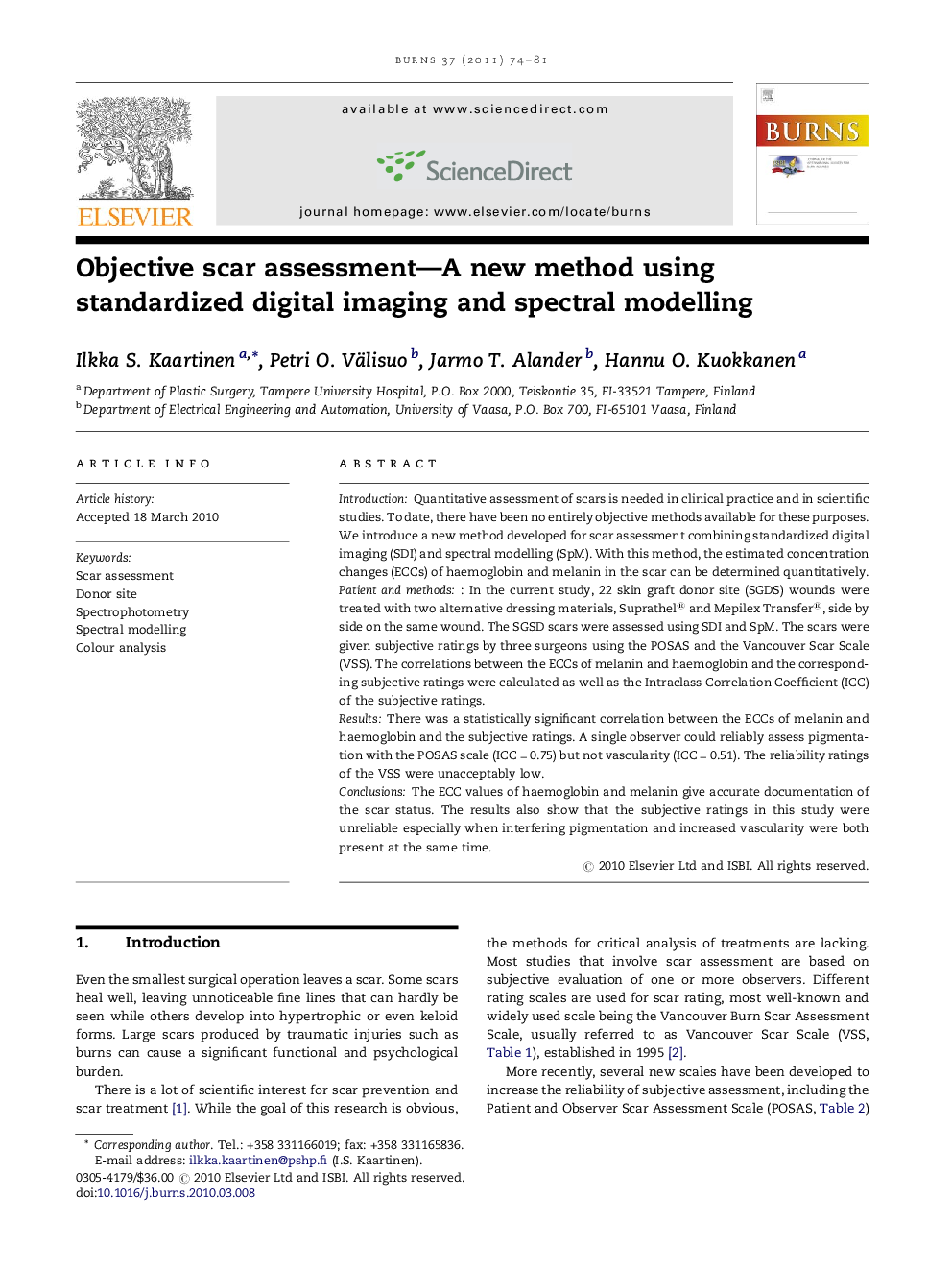| Article ID | Journal | Published Year | Pages | File Type |
|---|---|---|---|---|
| 3105018 | Burns | 2011 | 8 Pages |
IntroductionQuantitative assessment of scars is needed in clinical practice and in scientific studies. To date, there have been no entirely objective methods available for these purposes. We introduce a new method developed for scar assessment combining standardized digital imaging (SDI) and spectral modelling (SpM). With this method, the estimated concentration changes (ECCs) of haemoglobin and melanin in the scar can be determined quantitatively.Patient and methods: In the current study, 22 skin graft donor site (SGDS) wounds were treated with two alternative dressing materials, Suprathel® and Mepilex Transfer®, side by side on the same wound. The SGSD scars were assessed using SDI and SpM. The scars were given subjective ratings by three surgeons using the POSAS and the Vancouver Scar Scale (VSS). The correlations between the ECCs of melanin and haemoglobin and the corresponding subjective ratings were calculated as well as the Intraclass Correlation Coefficient (ICC) of the subjective ratings.ResultsThere was a statistically significant correlation between the ECCs of melanin and haemoglobin and the subjective ratings. A single observer could reliably assess pigmentation with the POSAS scale (ICC = 0.75) but not vascularity (ICC = 0.51). The reliability ratings of the VSS were unacceptably low.ConclusionsThe ECC values of haemoglobin and melanin give accurate documentation of the scar status. The results also show that the subjective ratings in this study were unreliable especially when interfering pigmentation and increased vascularity were both present at the same time.
